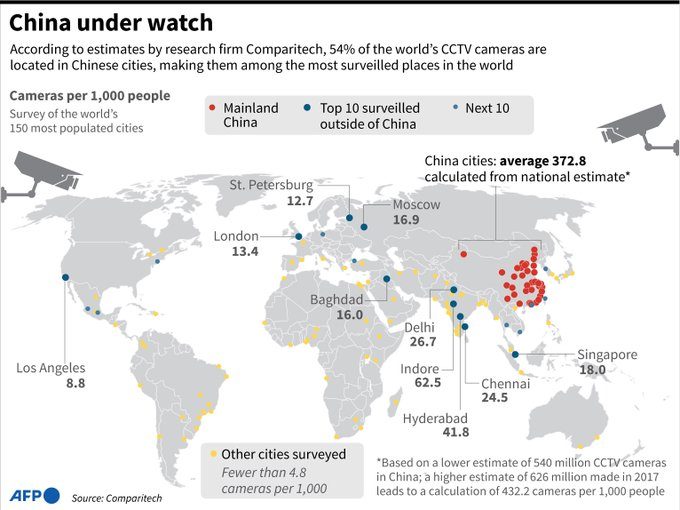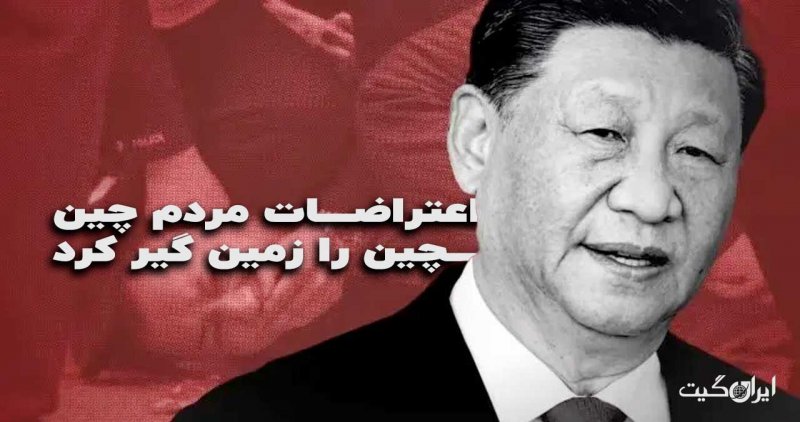The protests of the Chinese people have brought China to a standstill
In recent weeks, the days have been marked by the expression and display of the Chinese public’s anger towards the policies of the ruling Communist Party of this country. The important point about these protests is that what we know about them, and the images, videos, and reports that have been transmitted, at least in the past two weeks, undoubtedly represent part of the realities of the protests that have occurred in various cities across China.
Heavy news censorship and control of social networks in China have made it impossible for many events to be reported and made public. Everything that has emerged from the various dimensions of the protests and the public’s anger towards the policies of the Chinese Communist Party, the central authorities in Beijing, and also the officials in various regions in the realm of international interactions has created slight hopes among human rights activists and freedom seekers.

Protest and expression of dissatisfaction
For many political and social experts on China in the West and researchers following this country’s developments, two points had almost become obvious: one was that the Chinese citizen identity had become largely unfamiliar with the concept of expressing anger and dissatisfaction and showing protest against the current situation, and the other was that in recent years, the grounds for dissatisfaction had seriously existed, and the Chinese had serious reasons to criticize their situation.
Everything did not start with the outbreak of the Corona crisis and the beginning of the amazing and historical period of the spread of this deadly virus from China to the entire world. However, this story should be considered a turning point in China’s modern history. The astonishing scenes that Western journalists transmitted in the early hours of the first news about the complete lockdown of Wuhan and the efforts of Chinese citizens to escape from this area were moments when the first heavy shocks hit Chinese society.
Large cities with citizens who had long been accustomed to modern urban life, albeit according to the version of the Chinese Communist Party, were locked in the cages of their apartments by the administrative and political officials of the cities and various regions. During the international Corona crisis years, the concept of lockdown and the complete closure of cities, all offices, buildings, businesses, travels, and other collective fields became familiar to citizens of many countries around the world. However, the Chinese version of lockdown was a strange one.
The deadly silence of the streets in the West during Corona shutdown days was experienced by the Chinese in the corridors of residential complexes. The shutdown and restrictions started from the doors of homes and apartments. Reports about protests against these conditions existed, yet there was never any sign of the protests spreading. The main reason for the success of the ruling Communist Party officials should be sought in the development of a powerful social control structure. This point is more important than the Corona story in the past year.
The concept of Chinese social control
The ruling Communist Party of China should be considered one of the most powerful governing states in the matter of social control and the development of software and hardware structures and the training of official and unofficial security and police forces for citizen surveillance and monitoring. The special administrative and political structures for citizen surveillance in China are designed in such a way that they provide high capability to control any unpleasant events.
These administrative and political structures are equipped with the latest technology needed to monitor urban structures, public places, various social institutions like schools and universities, hospitals and medical centers, various recreational centers from cinemas and parks to even tourist centers, public transportation structures, and large urban residential centers.
Closed-circuit cameras are one of the foundational aspects and an inseparable part of Chinese citizen life. More than trash cans, closed-circuit cameras can be found on the main streets of Chinese cities. Urban life has also expanded, and a significant part of China’s population has become urbanized, essentially living under the shadow of closed-circuit cameras.
The Chinese have effectively expanded modern technology and ultra-modern hardware for these cameras and have become one of the most important exporters of technology and equipment in this field. Unfortunately, Iran’s regime is also an important customer of Chinese companies involved in the production of cameras and other urban control equipment.

Public protest is abundant in China
Contrary to many people’s beliefs, public protests and expressions of dissatisfaction do occur in China. Indeed, public gatherings in protest against disorder are relatively common, and these protests actually focus on various areas and, depending on different topics, are directed at regional and local administrative and political officials, and they take place with slogans, statements, and sentences based on the expression of dissatisfaction.
Farmers and industrialists have raised their protests on various issues many times, which is somewhat similar to the specific gatherings of various labor unions in Iran, where, carrying flags and pictures of the leader and president, they pledge allegiance to the system more than they protest.
An interesting point in this context has been the formation of a few protest movements by the middle class and the upper-middle class, which have differed from other social movements in China. The most important example of seemingly simple yet significant social movements that we have previously mentioned in our reports on China for our audience has been the public anger of investors in the housing sector in China, where the disorder in the construction industry and the problems of China’s, and indeed the world’s, largest construction companies have put their capital, hope, and lives at risk.
A public movement emerged among the middle-class investors in the housing sector to stop paying installments in protest against the non-delivery of pre-purchased units. This interesting protest by these investors, which actually targeted the already distressed and bankrupt or semi-bankrupt construction companies, had a relative result.
The government injected large sums through banks into the construction industry, and slight changes were made to speed up the delivery of pre-sold units. As we have said in previous reports, this issue is not simple. The construction industry is the heart of industry and capital in China, and the tremors caused by investors’ protests were no joke.
Serious transformation in the process of forming an independent social identity and forming cohesive group and social structures in China has occurred slowly. Many of the grounds for forming this group identity have been controlled by the nationwide and regional party structures.
On the other hand, the social transformation resulting from the expansion of urbanization and the manifestation of an urban lifestyle hooked onto administrative and political party structures in various fields such as education, economy, health, trade, and business has caused Chinese life and society to have special similarities and realities with other societies. Yet, on the other hand, with the lack of cohesive group and institutional structures under the dominance of the Communist Party, the expectations of external observers from this society to show social movements have not been met. In the next section of the narrative of the ongoing protests in China, we will discuss the process that has led to these days in China, protests that have targeted an issue that Xi Jinping is not willing to compromise on.
- Weather and environment during wartime
- Light and dark in China’s crisis-hit capital market
- China’s show of power to the US in Africa

